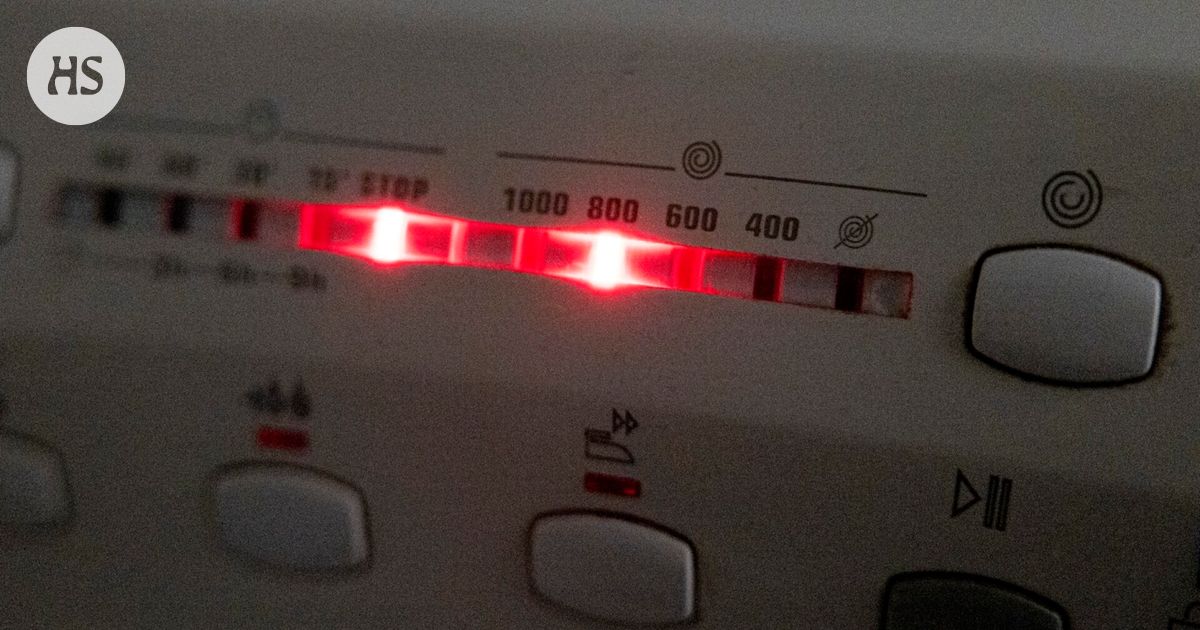Domestic appliances|According to researchers, it is rare for devices to be deliberately designed to break.
The abstract is made by artificial intelligence and checked by man.
According to a Norwegian study, the lifetime of washing machines has been reduced from 19 to 11 from the 1990s to the 2000s.
Researchers Kamila Krych and Johan Berg Pettersen from the Norwegian University of Technology investigated changes in the life of home appliances.
The reason may be increased laundry: from two mechanical weeks of the 1960s, the number has risen to eight in the 21st century.
Own Knows that home appliances do not last as in the old days, but what does hard data say?
Norwegian researchers investigated many statistics, which the sale and ownership of home appliances tells about their life since 1940.
The focus was on refrigerators, freezers, washing machines, drying drums, dishwashers and ovens.
The result was not single -line. The life of refrigerators and freezers seems to have even been slightly extended in this millennium compared to the 1990s.
Ascension machines and drying drums will have to change a little faster. However, for these four home machines, the changes are not statistically significant.
Instead, the median life of washing machines collapsed from 19.2 to 10.6 from the 1990s to the 2000s.
The lifetime of the furnaces was also dramatically reduced. The oven previously remained in use for 23.6 years, but now only 14.3 years.
Washing machines in 1998.
Roughly To say, modern refrigerators, washing machines, dryer, ovens and dishwashers last for 10 to 15 years, freezers for about 20 years.
In the past, the service life of the machines varied from ten to thirty years.
For a faster exchange interval, the study does not tell anything certain, but it will find some references.
One reason is simple. For example, laundry is washed much more frequently than in the last century.
The average Norwegian family of four washed two mechanical laundry a week in the 1960s. In the 2000s, the washing machine was rotated eight times a week.
According to researchers, the change in habits is with how purity has become tighter in the West.
“It can be assumed that the washing machine will have to be renewed more often,” writes the research authors Kamila Krych and Johan Berg Pettersen From the Norwegian University of Technology from Trondheim in his report In the Journal of Industrial Ecology.
Modern Consumers have been criticized for a disposable culture where intact goods are discarded and acquired more attractive to the farm.
On the other hand, manufacturers are suspected of planning their products to wear and break their products to sell new ones.
The famous example is the 1920s filamentwhere the manufacturers agree on how long the lamp can work.
Norwegian researchers point out that, according to their results, not all devices will wear out faster than before. Other research also suggests that producers rarely make their products deliberately disintegrate.
Price competition can weaken the quality of the products. In addition, electronics and increased functions can make devices easier to defect and harder to repair, researchers write.
EU Adjusted last summer on the right to repair the directive. It obliges manufacturers of public home equipment to repair their own products at a reasonable price and within a reasonable time, if technically repaired.
The Directive includes washing machines, vacuum cleaners and smartphones.
Manufacturers must also make spare parts and tools available to repair the device.
